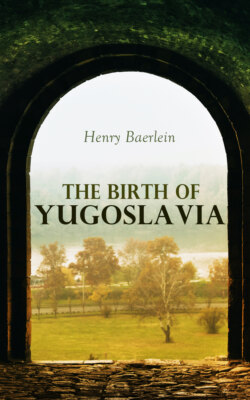Читать книгу The Birth of Yugoslavia - Henry Baerlein - Страница 29
THE SLAVS WHO MIGRATED
ОглавлениеBut, apart from the Bogomiles, the number of those who of their own free will went over to the Turks was scanty. Far more numerous were those who abandoned their country and crossed the Danube to Hungary, to Transylvania, to Wallachia, to Bessarabia, thus returning with weary hearts to some of the places which, a thousand years before, had seen their shaggy ancestors come trooping westward. What they heard in the Banat, the part of southern Hungary they came to first, must have induced a large proportion of them to remain, for they were told by those who had migrated after Kossovo, in the days of old George Branković and of Stephen the son of Dušan, that this was a good land and that the masters of it, the Hungarians, were much more easy to live under than the Turks. Not that it was necessary to live under them, because one could settle in the lands or in the towns which had been given by some arrangement to Stephen and to George Branković. These were lands so wide that all the Slav wanderers could make a home on them; they extended to the river Maroš and even beyond it. If they settled in one of those districts it would be under one of their own leaders and judges, not those of the Hungarians. There did not seem to be many Hungarians, and perhaps that was why they wanted other people in the country, especially now that the Turk was not far off. If anyone decided to live under the Hungarians, that also was much better than under the Turks; in this country of fine horses you were not prevented from going on horseback. Then it was much easier to speak to the Hungarians, because a great many words in their language, particularly the words which had to do with agriculture, seemed to be Slav. So alluring, in fact, was the state of things in the Banat, as these people painted it, that many of the immigrants, in their relief and happiness, wanted to hear no more. They scarcely listened while they were being told about the Slav settlers, in pretty large numbers, who had been there longer still, people who said that they had lived there always, even before the building of the Slav monasteries, and some of these were three or four hundred years old, as could be proved by rescripts of the Popes. Likewise those who had always lived there reported that some of their own race had been great men—one had been the Palatine of Hungary in the days when King Stephen ii. was a child, another was the Palatine Belouch, brother to Queen Helen; and were not the monasteries there to remind one of the leaders, the voivodas, who liked to raise such temples so that prayers could be said for the repose of their souls?
It was known that a people which professed the same religion as themselves—"a people of shepherds," as King Andrew II. called them in a decree dated 1222, the time of their first appearance in Hungary—it was known that these Roumanians from Wallachia were just advancing from Caras-Severin, the most easterly of the three counties of the Banat, into Temes, which is the central one. But even if they came farther west it did not seem to matter; one had a kindly feeling for them, since there was a good deal of Slav in their language, and if they were averse from building monasteries, that was their own affair. They had, it was interesting to learn, invited a Serb, the same man who had erected Krushedol monastery in Syrmia, to build one at least as imposing for them at a place called Argesu, to the north of Bucharest.
Thus one cannot be surprised that hundreds and thousands of Serbs and Bulgars quitted their native lands—they were not known to the Turks as Serbs and Bulgars, but merely as raia of the province of Rumili—and crossed the Danube, the Serbs going chiefly to their own countryfolk in Banat and the lands to the west of it, while the Bulgars went partly to the Banat, where their descendants have won fame as market-gardeners, but chiefly to Roumania, settling in villages round Bucharest.
